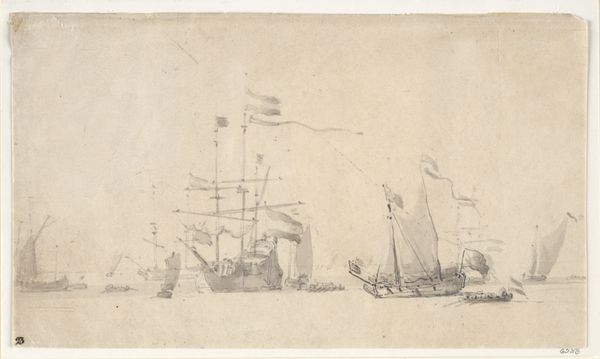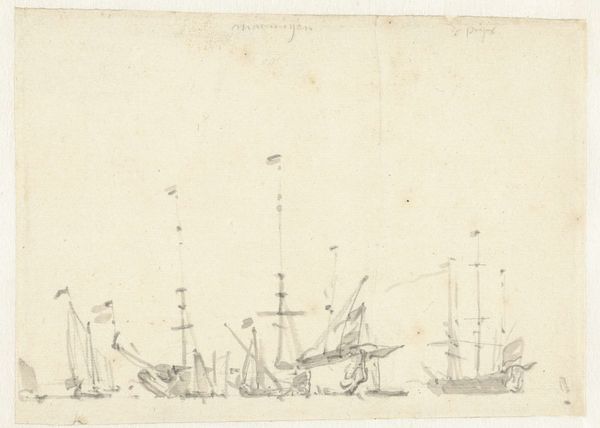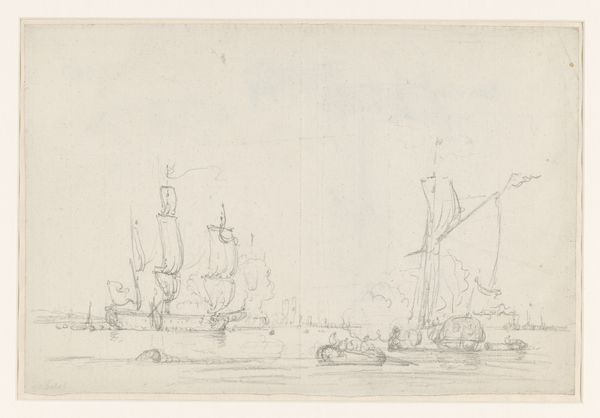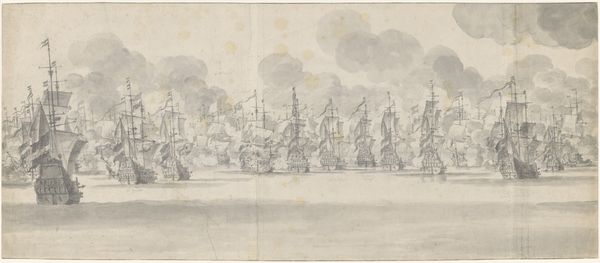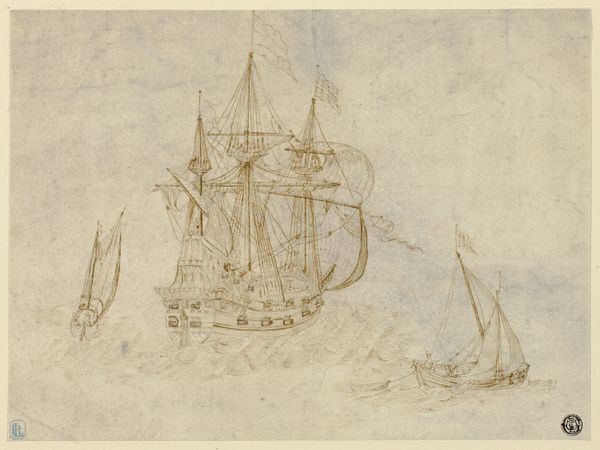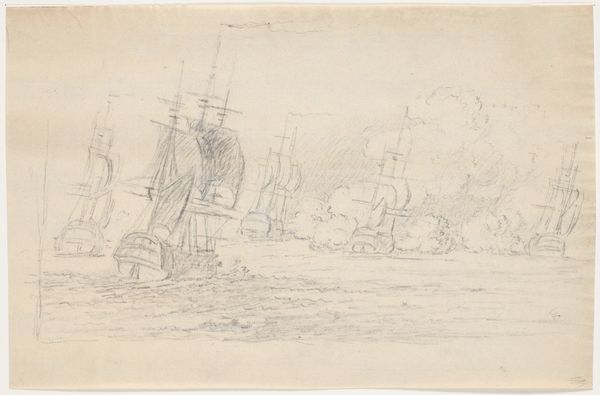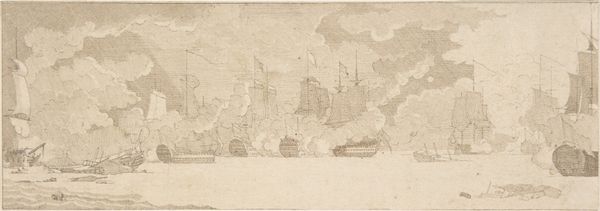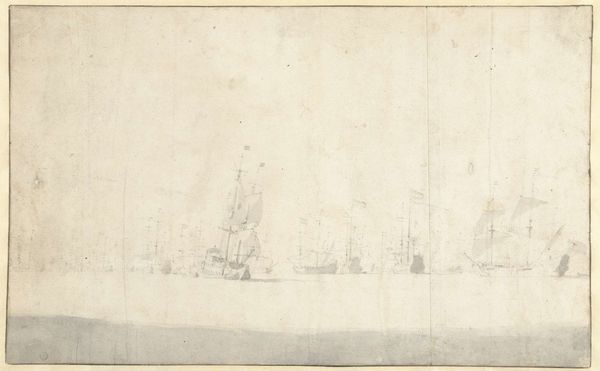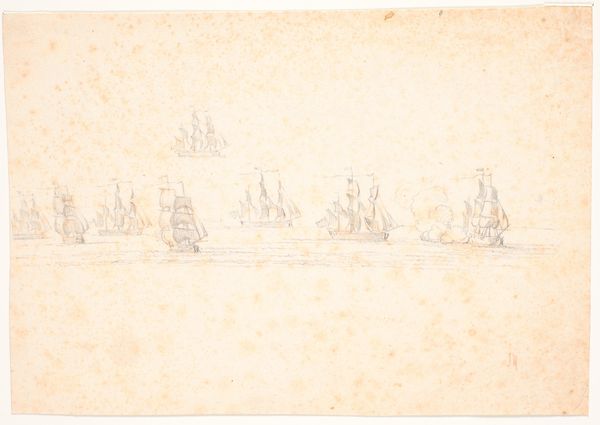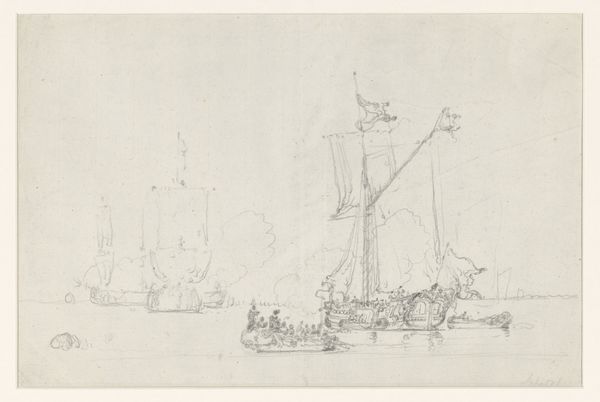
drawing, print, etching, pencil
#
drawing
# print
#
etching
#
landscape
#
etching
#
pencil
#
genre-painting
Dimensions: sheet: 10 9/16 x 17 3/8 in. (26.8 x 44.1 cm)
Copyright: Public Domain
Editor: This is Willem van de Velde the Younger's "A Fleet," likely created between 1648 and 1707. It's an etching, with some pencil and print work it seems. There's a misty, almost dreamlike quality to the composition. The ships appear both grand and somewhat fragile. What socio-political narratives are being reflected? Curator: This piece is indeed evocative, and your reading hits the mark! But let's contextualize the dream-like state within a specific history: consider the role of the Dutch East India Company and the Dutch Republic’s dominance of maritime trade during van de Velde’s time. What stories do these ships, these instruments of trade and potential violence, tell about power and privilege? Editor: I see what you mean. The elegance of the drawing almost hides the more difficult aspects of that maritime power, the exploitation, the violence. How might class dynamics play a role here? Curator: Exactly! Van de Velde was the official marine draughtsman for the English crown later in his career, but these ships evoke Dutch maritime prowess. Consider who commissioned and consumed these images: wealthy merchants, aristocratic patrons, those invested in maintaining the status quo. Whose perspectives are absent from this seemingly serene scene? Editor: So, while the drawing is beautiful, we also need to think about what it leaves out. The voices of the colonized, the enslaved... Curator: Precisely! This fleet represents not just trade but also the projection of power and control across vast distances. By critically examining these absences, we can better understand the complex interplay of aesthetics, power, and historical context. It's a reminder that beauty doesn't exist in a vacuum; it’s intertwined with historical realities. Editor: That's really shifted my perspective. I see it now as a snapshot of a very specific, and morally ambiguous, moment in history. Curator: Art serves as a powerful conduit to our past, and as a tool for challenging its legacies in the present. The more we contextualize, the more the art begins to reveal!
Comments
No comments
Be the first to comment and join the conversation on the ultimate creative platform.
